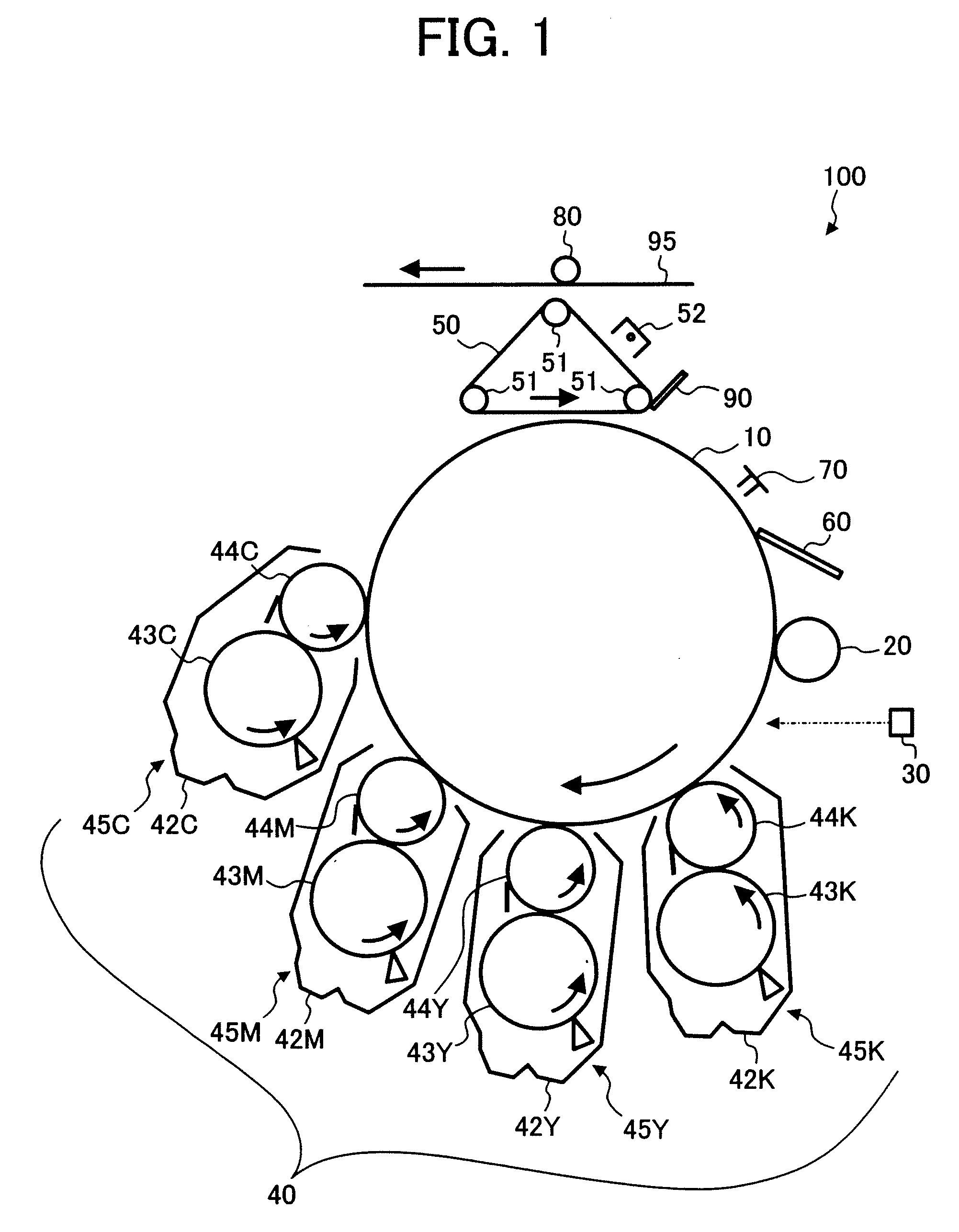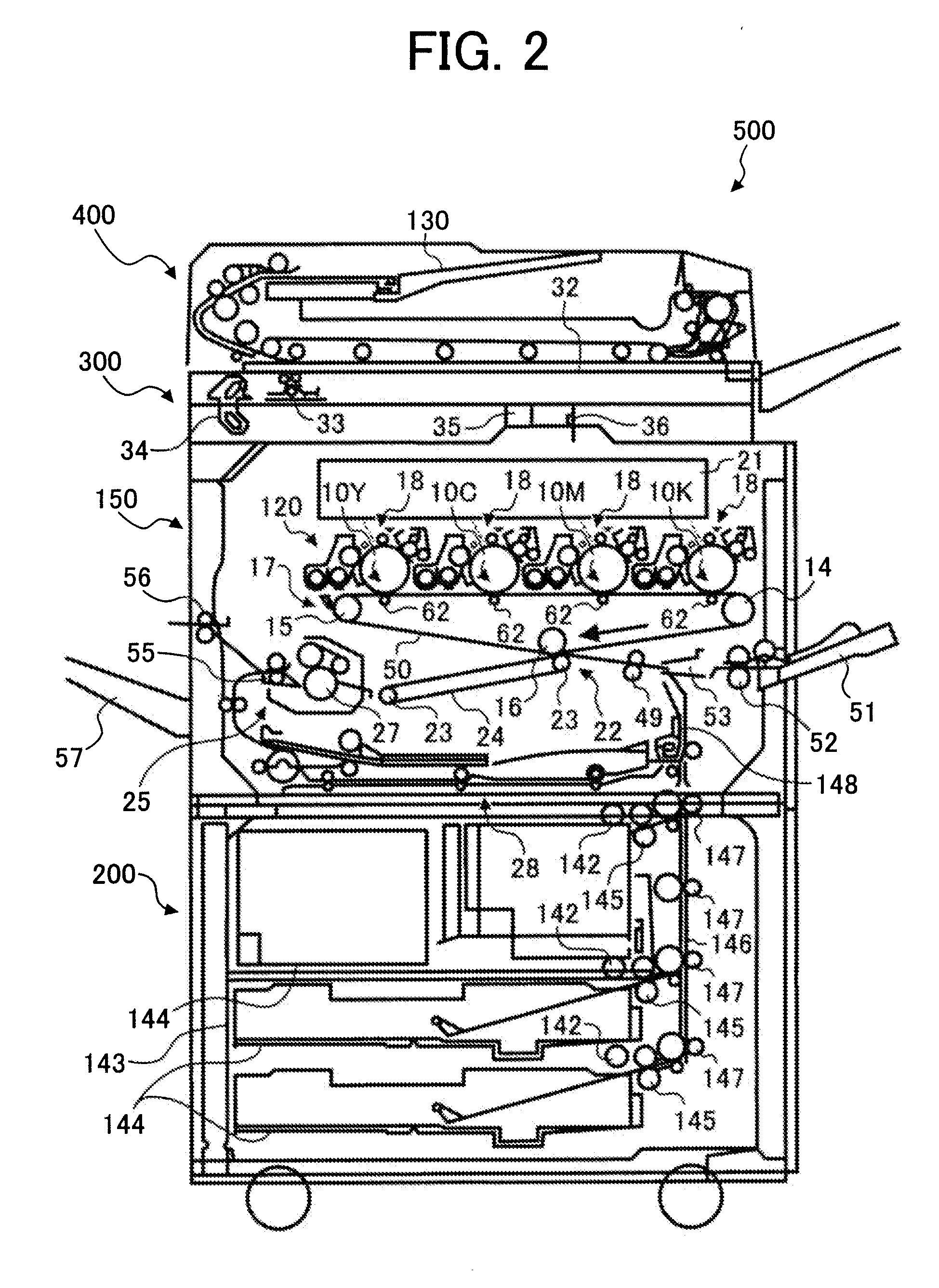Toner, method for manufacturing the toner, developer including the toner, toner container containing the toner, and image forming method, image forming apparatus and process cartridge using the toner
a technology of toner and developer, which is applied in the field of toner, can solve the problems of large power needed to operate the fixing device, the difference in temperature between a portion (contact portion) of the heat roller and a portion, and the difference in temperature between a portion and a portion of the heat roller contacting the receiving material sheet, etc., and achieves good hot offset resistance, low temperature fixability, and good combination of preservability
- Summary
- Abstract
- Description
- Claims
- Application Information
AI Technical Summary
Benefits of technology
Problems solved by technology
Method used
Image
Examples
manufacturing example 1
Preparation of Particulate Resin Dispersion (1)
[0403] In a reaction vessel equipped with a stirrer and a thermometer, 683 parts of water, 11 parts of a sodium salt of sulfate of an ethylene oxide adduct of methacrylic acid (ELEMINOL RS-30 from Sanyo Chemical Industries Ltd.), 83 parts of styrene, 83 parts of methacrylic acid, 110 parts of butyl acrylate, and 1 part of ammonium persulfate were contained. The mixture was agitated for 15 minutes while the stirrer was rotated at a revolution of 400 rpm. As a result, a milky emulsion was prepared. Then the emulsion was heated to 75° C. to react the monomers for 5 hours.
[0404] Further, 30 parts of a 1% aqueous solution of ammonium persulfate were added thereto, and the mixture was aged for 5 hours at 75° C. Thus, an aqueous dispersion of a vinyl resin (i.e., a copolymer of styrene / methacrylic acid / butyl acrylate / sodium salt of sulfate of ethylene oxide adduct of methacrylic acid) was prepared (this dispersion is hereinafter referred to...
manufacturing example 2
Preparation of Particulate Resin Dispersion (2)
[0406] The procedure for preparation of the particulate resin dispersion (1) was repeated except that the added amounts of styrene, methacrylic acid and butyl acrylate were changed to 79 parts, 79 parts and 105 parts, respectively, and 13 parts of 1,6-hexanedioldiacrylate were added. Thus, an aqueous dispersion of a vinyl resin (i.e., a copolymer of styrene / methacrylic acid / butyl acrylate / sodium salt of sulfate of ethylene oxide adduct of methacrylic acid / 1,6-hexanedioldiacrylate) was prepared (this dispersion is hereinafter referred to as particulate resin dispersion (2)).
[0407] The volume average particle diameter (Dv) of the particles in the particulate resin dispersion (2) was 105 nm. Part of the particulate resin dispersion (2) was heated to solidify the resin. The glass transition temperature (Tg), number average molecular weight (Mn) and weight average molecular weight (Mw) of the resin were 105° C., 167,000 and 1,000,000, res...
manufacturing example 3
Preparation of Particulate Resin Dispersion (3)
[0408] The procedure for preparation of the particulate resin dispersion (1) was repeated except that the added amount of ELEMINOL RS-30 was changed from 11 parts to 21 parts, and 13 parts of 1-dodecyl mercaptan (THIOKALCOHL 20 from Kao Corp.) were added. Thus, an aqueous dispersion of a vinyl resin (i.e., a copolymer of styrene / methacrylic acid / butyl acrylate / sodium salt of sulfate of ethylene oxide adduct of methacrylic acid) was prepared (this dispersion is hereinafter referred to as particulate resin dispersion (3)).
[0409] The volume average particle diameter (Dv) of the particles in the particulate resin dispersion (3) was 15 nm. Part of the particulate resin dispersion (3) was heated to solidify the resin. The glass transition temperature (Tg), number average molecular weight (Mn) and weight average molecular weight (Mw) of the resin were 95° C., 1,000 and 5,000, respectively.
PUM
 Login to View More
Login to View More Abstract
Description
Claims
Application Information
 Login to View More
Login to View More - R&D
- Intellectual Property
- Life Sciences
- Materials
- Tech Scout
- Unparalleled Data Quality
- Higher Quality Content
- 60% Fewer Hallucinations
Browse by: Latest US Patents, China's latest patents, Technical Efficacy Thesaurus, Application Domain, Technology Topic, Popular Technical Reports.
© 2025 PatSnap. All rights reserved.Legal|Privacy policy|Modern Slavery Act Transparency Statement|Sitemap|About US| Contact US: help@patsnap.com



